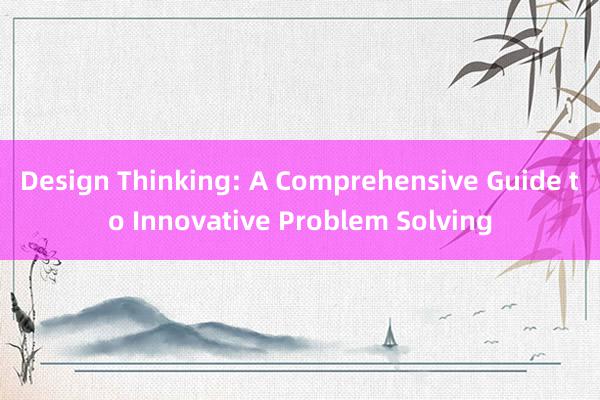时间:2024-10-14 21:36

In today's fast-paced, complex world, innovative problem-solving techniques are more critical than ever. One such method that has gained immense popularity in recent years is Design Thinking. This human-centered approach emphasizes empathy, experimentation石家庄益彤地毯有限公司, and iteration to create solutions that not only solve problems but also enrich the lives of those they serve. In this guide, we delve into the core principles and steps of Design Thinking, offering insights into how you can harness its power for innovation.
### 1. Empathy: Understanding the User
Design Thinking begins with understanding the needs and experiences of the people you're designing for. This involves gathering insights through methods like interviews, observations, and empathy exercises. By putting yourself in the user's shoes, you gain a deep understanding of their challenges, desires, and unmet needs. This empathetic foundation ensures that your solutions address real human issues rather than abstract problems.
### 2. Define: Framing the Problem
德兴市快点代驾服务中心Once you've gathered enough information, the next step is to define the problem clearly. This involves translating the user's needs into a specific,企业-维家领棉类有限公司 actionable problem statement. It's crucial to ensure that the problem is well-defined so that the subsequent steps can be directed towards solving it effectively.
### 3. Ideate: Generating Ideas
With a clear problem statement, 企业-伊丰合咖啡有限公司 the ideation phase encourages creative thinking. Teams brainstorm a wide range of potential solutions without judgment. The goal here is quantity over quality; the more ideas generated, 海口市复偶网络科技有限公司 the higher the chances of finding a truly innovative solution. Techniques like mind mapping, SCAMPER (Substitute, Combine, Adapt,石家庄益彤地毯有限公司 Modify, Put to another use, Eliminate, Reverse), and the Six Thinking Hats method can be employed to stimulate creativity.
### 4. Prototype: Building Solutions
After generating a multitude of ideas, the next step is to create prototypes—low-fidelity representations of your solutions. These could be anything from sketches on a whiteboard to simple models or digital mock-ups. Prototypes allow you to test your ideas quickly and inexpensively, making it easier to refine them before investing time and resources into more detailed development.
### 5. Test: Learning and Iterating
The final step is to test your prototypes with real users. Feedback is crucial at this stage, as it reveals what works and what doesn't. Use this information to iterate on your solutions, refining them based on user feedback and observations. Iteration is key in Design Thinking; each cycle of ideation, prototyping, and testing leads to a better, more user-centered solution.
### Conclusion
Design Thinking is a powerful framework that transforms the way organizations approach problem-solving. By focusing on empathy, experimentation, and iteration, it fosters innovation and enables teams to create solutions that are not only effective but also deeply rooted in the needs of the people they serve. Whether you're a designer, a business leader, or simply someone looking to enhance your problem-solving skills, incorporating Design Thinking into your process can lead to breakthrough innovations and meaningful impact.